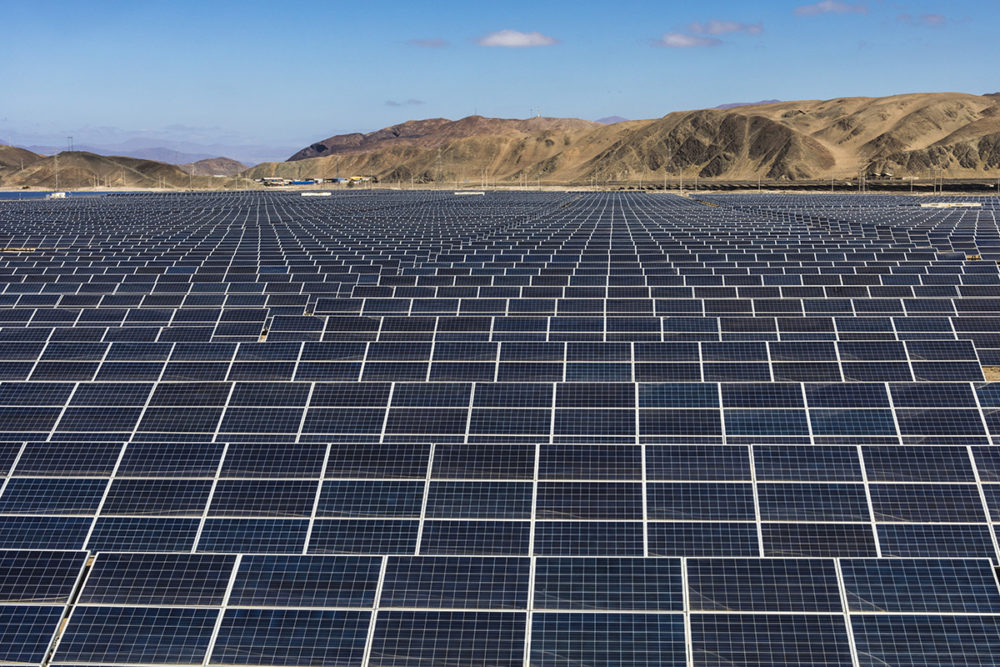The growth of the solar industry has been an incredible renewable energy success story, with an average annual growth rate of 59% over the last decade according to SEIA. By 2023, more than 14 GWdc of PV capacity is forecasted to be installed annually. Given an average panel size of 295 watts, that’s over 64 million panels per year!
While this growth is a tremendous boon for the environment as a means of tackling climate change and reducing air pollutants, there is one potentially negative environmental impact of solar energy that remains largely unaddressed. What will happen to this vast supply of solar panels as they reach the end of their productive life?
Without systems in place for sustainably managing solar panel waste, it could become a significant environmental challenge. Proactively implementing solar panel recycling processes, however, can offer business benefits as well as environmental sustainability.
To better understand the significance of this issue, what’s being done, and how the industry can benefit, Aurora Solar spoke with Dr. Vasilis Fthenakis and Michael Ginsberg from Columbia University’s Center for Life Cycle Analysis.
 Dr. Vasilis Fthenakis is the founder and director of the Center for Life Cycle Analysis (CLCA) at Columbia University’s Department of Earth & Environmental Engineering. He is also a senior scientist emeritus at Brookhaven National Laboratory (BNL) where he conducted research for 36 years and directed the National Photovoltaic (PV) Environmental Research Center. His research is a crucial part of the scholarly landscape for comparing renewable energy technologies with conventional energy options and is assisting the large-scale penetration of solar into the European and U.S. electricity grids. Some of his current research focuses on identifying cost-effective solar recycling options.
Dr. Vasilis Fthenakis is the founder and director of the Center for Life Cycle Analysis (CLCA) at Columbia University’s Department of Earth & Environmental Engineering. He is also a senior scientist emeritus at Brookhaven National Laboratory (BNL) where he conducted research for 36 years and directed the National Photovoltaic (PV) Environmental Research Center. His research is a crucial part of the scholarly landscape for comparing renewable energy technologies with conventional energy options and is assisting the large-scale penetration of solar into the European and U.S. electricity grids. Some of his current research focuses on identifying cost-effective solar recycling options.
 Michael Ginsberg is a Ph.D. candidate in Professor Fthenakis’s group at Columbia University’s School of Engineering and Applied Science. He has served as an energy management trainer and policy advisor for the U.S. Department of State on issues of energy diplomacy. Through his firm, Mastering Green, he has advised the New York City Mayor’s Office of Sustainability and Long Term Planning and the UN Development Programme on climate change adaptation measures in NYC and West Africa.
Michael Ginsberg is a Ph.D. candidate in Professor Fthenakis’s group at Columbia University’s School of Engineering and Applied Science. He has served as an energy management trainer and policy advisor for the U.S. Department of State on issues of energy diplomacy. Through his firm, Mastering Green, he has advised the New York City Mayor’s Office of Sustainability and Long Term Planning and the UN Development Programme on climate change adaptation measures in NYC and West Africa.
Gwen Brown: Why is solar panel recycling an increasingly important issue for the solar industry, as well as for society more broadly?
Fthenakis: One key reason is that the volume of photovoltaics is increasing, so having a system in place for the end-of-life management of the panels is becoming more and more important. The necessity of this will become more obvious as big installations, and large volumes of panels reach their end of life. For residential systems, owners will be wanting to do something with the modules that they have on their roofs, and will be asking for avenues for disposing of them. It’s becoming a necessity.
Second, there are some toxic elements in solar panels, which make it important that they be managed responsibly. And third, solar panels contain relatively rare elements of high value. When they are recycled, it enhances the sustainable growth of photovoltaics by creating a secondary stream of valuable materials. In this way, recycling can help relieve pressure on panel prices.

The huge volume of solar panels being installed in recent years will make it especially important to have recycling programs in place for sustainably managing these panels when they reach their end of life.
Brown: What are some of the advantages for solar manufacturers that integrate recycling practices into their business operations?
Fthenakis: One is the marketing advantage. Customers and stakeholders want the whole lifecycle of photovoltaics to be beneficial for the environment. When solar panels operate, they are obviously beneficial to the environment, especially if they displace other dirty power generation systems. But end-of-life management of panels is the only negative environmental impact of photovoltaics that is not really resolved in the United States. So tackling this issue is very important from a marketing and public relations standpoint.
Second, regulations are expected. Although we don’t know when, we expect regulations in the U.S. on the management of solar waste at some point, as we have seen in Europe. If the industry is proactive, it can get ahead of the regulations. Industry stakeholders will be able to plan a recycling scheme the way they think it will work best, not in the way regulators might enforce it.
A third benefit for manufacturers, is that they can capture the value of the relatively rare elements that can go back into the manufacturing of photovoltaics—for example, silver in crystalline silicon panels; in thin films, tellurium, indium, gallium, germanium. These types of rare elements will need to be sustained through the century for the production of photovoltaics.
Brown: Given the limited supplies of some of these rare earth metals that are needed for different types of panels, will recycling be important in the long-term to protecting the supply chains of different types of solar panels?
Fthenakis: Toward the middle of the century, with expected growth, recycling will start becoming very important to solar panel supply chains. Projections show that, from mid-century on, the secondary stream could become as big as the primary one. There are two reasons for this. One is the large volume of solar installations that will be reaching their end of life at that point. Second, the primary production of many important elements for solar panel production, such as zinc and copper, will peak by that point.
To sustain the transition from fossil fuels into renewable energy, with solar as major constituent, the solar industry will need to keep growing through the end of the century. Without recovery of those materials, it may not be able to. Recycling will become a necessity—not immediately, but from 2035 on.

Tellurium, used in thin film solar panels, is an example of an element whose supply will peak in the coming decades. This chart shows projections of tellurium availability for photovoltaics from copper smelters (dashed lines; peaking in ∼ 2055) and total from copper smelters and recycling of end-of-life photovoltaic modules (solid lines; continuing upward trend until 2095). The red and blue curves in each pair correspond to high and low projections, respectively. Note: A tellurium demand of 322 t/yr for non-photovoltaic uses was subtracted. Source: Fthenakis, V. (2012). Sustainability metrics for extending thin-film photovoltaics to terawatt levels. MRS Bulletin, 37(4), 425-430. doi:10.1557/mrs.2012.50.
Brown: Are there any other final thoughts on solar panel recycling that you would like to share with our readers?
Fthenakis: I encourage solar installers to communicate to their suppliers that a recycling program is needed; customers will increasingly be asking for it.
Ginsberg: The work on separation of elements has been done. Beyond the fact that the increasing demand of rare elements will necessitate their reuse, we need collection infrastructure paradigms that ensure profitability for manufacturers, whereby the revenue from output materials is greater than the module receiving, processing and inventory costs. It will be important to put pressure on the module suppliers to set up these photovoltaic take-back centers and demonstrate that they are proactive about recycling.
Fthenakis: And when solar customers ask about what will happen to their system at the end of its life—because people who invest in photovoltaics tend to be environmentally conscious—it would be valuable to have planted the seeds of a recycling program to address these concerns.
To read the full interview covering additional topics including PV recycling barriers and differences in solar recycling between the U.S. and other markets, visit the Aurora Blog.









Hi Gwen! Great article! May I share article onto my facebook page: Solargymobile? I’d like to be instrumental in educating the public about solar A-Z.
Many thanks,
Suzanne Carroll
Solargy Mobile
(561) 985-5022